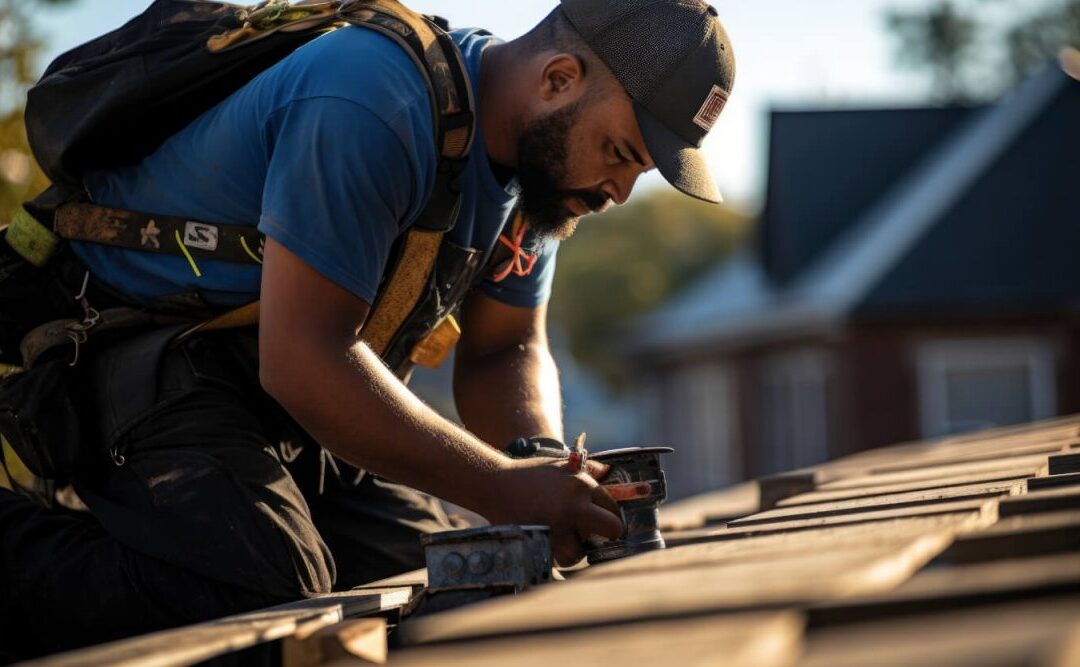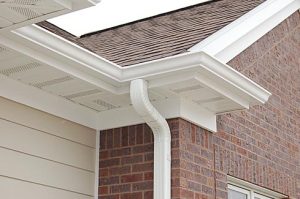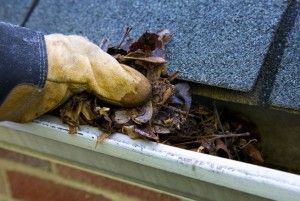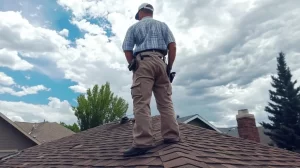As the snow melts and temperatures rise, spring is the perfect time for New Jersey homeowners to perform a Spring Roof Inspection. Winter weather can be brutal on your roofing system, causing hidden damage that might go unnoticed until it becomes a serious problem. A thorough Spring Roof Inspection allows you to catch small issues before they become costly repairs.
This guide will walk you through a step-by-step checklist tailored for NJ’s unique weather patterns—helping you ensure your roof is ready for the rainy season and beyond. Whether you’re doing a quick visual check or hiring a professional roofer, these steps will give you peace of mind and extend the life of your roof. Staying proactive with seasonal inspections is one of the most cost-effective ways to protect your home from long-term weather-related damage.
1. Start with a Visual Ground Inspection
Begin your inspection with a safe walk around your property. Using binoculars can help you get a better view of your roof without the need to climb. Look for signs of damage like missing or damaged shingles, dark patches, or sagging areas that might suggest trouble underneath. Sagging areas often point to underlying wood rot or weakened support structures.
It’s also important to observe the condition of flashing near chimneys and skylights, as well as check the fascia and soffits for cracks, discoloration, or pest damage. These components often go unnoticed but play a vital role in keeping water out and supporting your roof’s ventilation system. Making notes or snapping photos can help you remember areas of concern to review later with a roofing professional.
Don’t forget to scan for discoloration or uneven patches that might suggest algae or moss buildup. These substances trap moisture and cause shingles to break down prematurely. Being thorough in this first step ensures you’re not missing early signs of degradation that could worsen over time.
2. Inspect Your Gutters and Downspouts
Spring often brings heavy rainfall to New Jersey, so your gutter system must be in optimal shape to handle the water. Begin by removing debris such as leaves, twigs, or dirt that may have accumulated over the winter. Clogged gutters can cause water to pool and back up under the roof, leading to water damage.
Ensure that your gutters are securely attached and sloped correctly for drainage. Misaligned gutters can lead to pooling water near your foundation, which causes long-term structural issues. Also, examine downspouts to confirm they are not blocked and extend far enough from the house to direct water away. If you notice rust or leaks, consider replacing old segments before the spring rains begin.
Proper drainage is critical to keeping your roofing system dry and intact. When water overflows from faulty gutters, it doesn’t just pose a threat to your roof but also to your siding, landscaping, and basement. A thorough gutter inspection as part of your Spring Roof Inspection can significantly reduce the risk of water-related issues.
3. Check Attic Ventilation and Insulation
Your attic’s condition directly affects the health of your roof. During your Spring Roof Inspection, take time to go inside and assess the attic. Poor insulation or ventilation can lead to moisture build-up, which causes mold, mildew, and eventual decay of the wood framing. If your attic feels overly warm or humid, this is a clear sign that airflow is inadequate.
Look for signs of water stains on rafters, drooping or damp insulation, and any evidence of pests or nesting. Ventilation systems should be checked to ensure that intake vents (such as soffits) and exhaust vents (like ridge vents or attic fans) are clear and functioning. Good ventilation not only extends the life of your roof but also contributes to lower energy bills.
Over time, insulation can compress or become ineffective, reducing its ability to regulate temperature and prevent condensation. During your inspection, also check for air leaks from living spaces below, which can cause warm air to rise and condense in the attic. Fixing these issues not only protects your roof but also helps keep your home more energy efficient.
4. Examine Roof Penetrations and Flashing
Roof penetrations—any place where something passes through the roof, like a vent pipe or chimney—are common sources of leaks. During your inspection, get a good look at the flashing surrounding these features. Flashing is typically a metal barrier that seals joints and keeps water from entering these vulnerable areas.
Look for cracked caulking, rust, or lifted flashing edges. Also, examine rubber boots around vent pipes to ensure they’re not deteriorating. These areas tend to break down faster than the rest of your roof and often require more frequent maintenance. If you have had recent roof work or installations (like solar panels), be sure these areas are sealed correctly, as poor workmanship can easily lead to future leaks.
Flashing should lay flat against the surface and not show any gaps or buckling. Even slight lifting can allow wind-driven rain to enter your home. When these areas are overlooked, it can result in mold, water damage, or rot to the structure below. Re-caulking or replacing worn flashing is an inexpensive way to safeguard your roof from future problems.
5. Look for Signs of Animal or Insect Damage
As temperatures drop in winter, animals and insects often look for warm places to nest—and your attic or roofline might be the perfect spot. During your Spring Roof Inspection, check for any holes, chewed sections, or signs of entry, particularly around soffits and eaves.
You might also notice droppings, nesting materials, or strange smells in the attic. Birds, squirrels, raccoons, and bats are common culprits, and their presence can damage insulation, wiring, and wood. Insects like termites or carpenter ants can silently weaken the wooden components of your roof. Identifying these issues early can save you thousands in structural repairs and ensure your home stays pest-free throughout the warmer months.
Spring is also mating season for many pests, making early inspection even more critical. Even small holes can be an invitation for animals to move in. Reinforce any damaged areas with pest-resistant materials and consider consulting a professional exterminator if evidence of infestation is found.
6. Clean Off Debris from Roof Surface
Debris on your roof is more than just an eyesore—it can trap moisture and accelerate the aging of shingles. Make it a point during your inspection to remove branches, leaves, or any other buildup, especially in roof valleys or behind chimneys where debris tends to collect. This helps improve water runoff and prevents algae and moss from thriving in damp conditions.
Avoid using pressure washers, as they can strip away protective granules from shingles. Instead, opt for a soft broom or hire a professional to safely clean the roof surface. Keeping the roof clean also gives you a better view of any damage that may be hidden beneath debris. Proactive cleaning contributes to better drainage and extends the lifespan of your roofing materials.
In areas with lots of tree coverage, it may be necessary to trim back overhanging branches to reduce future debris. Consistent maintenance not only helps protect the structural integrity of your roof but also reduces the frequency and intensity of necessary cleanups throughout the year.
7. Schedule a Professional Roof Inspection
While a DIY inspection is a great first step, nothing replaces the expertise of a certified roofing professional. A trained inspector will check areas you might miss—such as subtle signs of material fatigue, flashing defects, or improper shingle installation. Professionals also provide official reports that are helpful if you need to file insurance claims or sell your home.
A professional Spring Roof Inspection typically includes both exterior and interior evaluations, moisture detection tools, and assessments of your roof’s structural integrity. By scheduling this yearly, you’ll be able to address small problems before they escalate into major repairs. Regular inspections also help maintain any warranties that may be in place on your roofing system.
Roofers often use infrared cameras or moisture meters to detect hidden leaks and weak spots. These advanced tools go beyond what the average homeowner can assess. Scheduling this service in early spring ensures your roof is ready for heavy rain and protects your home before summer heat puts additional stress on materials.
✅ Ready for Spring? Trust Deegan Roofing with Your Inspection
At Deegan Roofing, we help New Jersey homeowners keep their roofs in peak condition year-round. Our Spring Roof Inspection service includes a detailed assessment of your shingles, flashing, gutters, ventilation, and more.
We offer honest evaluations, expert repairs, and maintenance plans to protect your investment—no matter the season. With over 30 years of experience and deep knowledge of local weather patterns, we know exactly what to look for and how to keep your roof strong and leak-free. Our licensed and insured professionals treat your home with the utmost care and attention to detail.
Choosing Deegan Roofing means working with a company that values quality, reliability, and customer satisfaction. We take the time to explain what we find and recommend the best solutions for long-term protection. Let us help you make your home safer, more comfortable, and ready for whatever the New Jersey weather brings.
Contact Us Today:
Phone: (908) 322-6405
Email: info@deeganroofing.com
Website: www.deeganroofing.com
Free Estimate: Request a Quote
Don’t let winter damage go unnoticed—schedule your Spring Roof Inspection with Deegan Roofing today!




